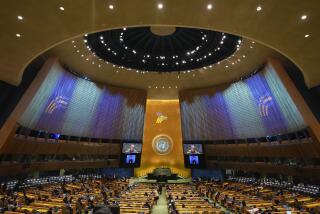U.S.-Canada Great Lakes’ cleanup pact may get revised
When Canada and the United States approved the Great Lakes Water Quality Agreement in 1972, the joke in Cleveland was that anyone unlucky enough to fall into the Cuyahoga River would decay rather than drown.
The Cuyahoga, which meanders through the city before reaching Lake Erie, helped inspire the cleanup initiative by catching fire three years earlier. The lower end of the 112-mile-long waterway was a foul brew of oil, sludge, sewage and chemicals. It made embarrassing headlines when its surface flamed for about 30 minutes.
Today the river is returning to health under a plan developed through the agreement. Pollution levels have fallen. Nearly 70 fish species have been detected in areas once considered virtually lifeless. Bald eagle nests have been spotted nearby.
“Maybe one day we’ll actually be able to swim within the harbor,” says Ed Hauser, an environmental activist who launches his kayaks from a park at the river mouth. “I’ll get my feet wet, but I sure don’t want to fall in there.”
The U.S. and Canadian governments are considering whether to update and strengthen the Great Lakes Water Quality Agreement, which hasn’t been significantly revised since 1987. It commits the two countries to “restore and maintain the chemical, physical and biological integrity” of the world’s biggest surface freshwater system -- a mission that many see as only partly accomplished.
Although the lakes and their major tributaries are less dirty than four decades ago, states continue warning children and women of childbearing age to limit fish consumption because of lingering toxicity. Algae overgrowth and a resulting oxygen-starved “dead zone” in Lake Erie, all but eliminated by the early 1980s, are returning.
And the waters face threats that were recognized barely if at all when the agreement first was crafted, such as the exotic species invasion, climate change and shoreline development.
Despite increasingly urgent warnings from scientists and activists that the lakes are in peril, the U.S. Environmental Protection Agency and its counterpart, Environment Canada, “have no preconceived notion that we will or will not revise the agreement,” says Mark Elster, senior analyst with the EPA’s Great Lakes National Program Office.
A committee representing both countries is studying the matter. A decision isn’t likely before next year, Elster says.
“Our only requirement right now is to review the agreement -- its operation and effectiveness,” he says. “The outcome of this process will be a report to the two governments on what could be done.”
Many supporters say the agreement has lost clout and could become irrelevant unless overhauled.
There’s no shortage of programs aimed at cleaning up the Great Lakes; a 2003 report by the U.S. Government Accountability Office identified 140 on the federal level alone. Yet the water quality agreement is unique because it obligates the two countries to work toward the same goals. Although not legally binding, it carries moral weight.
“It’s really our insurance policy that Canada and the U.S. will continue to treat the Great Lakes as a joint responsibility,” says Cameron Davis, executive director of the Chicago-based Alliance for the Great Lakes. “There is nothing else that comes close to providing that incentive.”
Yet even its biggest fans acknowledge that the agreement’s success record is mixed. Some say its influence peaked during the decade after President Nixon and Prime Minister Pierre Trudeau signed the initial version in 1972 and has waned since.
Simply persuading Canada and the United States to adopt a binational approach was a big accomplishment, says Lee Botts, co-author of a recent book on the agreement.
“That’s why it’s been considered a model around the world and really a pioneer at addressing environmental problems across international borders,” Botts says.
The pact called for a crackdown on phosphorus pollution blamed for rampant algae growth, which sucked oxygen from the waters and suffocated fish. Lake Erie had a gigantic dead zone, and beaches along Lakes Michigan and Ontario were strewn with rotting algae and alewife carcasses.
Governments responded by ordering phosphate cutbacks in laundry detergents and better treatment of sewage and industrial wastes. Within a few years, the algae problem faded, but it’s now returning -- possibly because of the exotic zebra mussel invasion.
Research conducted under the agreement yielded information about water pollutants, including airborne contaminants such as mercury and chemicals that move up the food chain instead of breaking down.
In 1978, the agreement was updated to propose “virtual elimination” of toxins from the lakes. Both nations have made progress. But not enough, say advocates who blame inadequate funding and regulation.
They point to 43 heavily contaminated harbors and river segments designated for special attention under the latest version of the accord, approved in 1987. Only three are finished. Most aren’t close.
The International Joint Commission, an independent agency that advises both countries on Great Lakes issues, last fall proposed replacing the agreement with a more flexible, action-oriented version.
More to Read
Sign up for Essential California
The most important California stories and recommendations in your inbox every morning.
You may occasionally receive promotional content from the Los Angeles Times.










